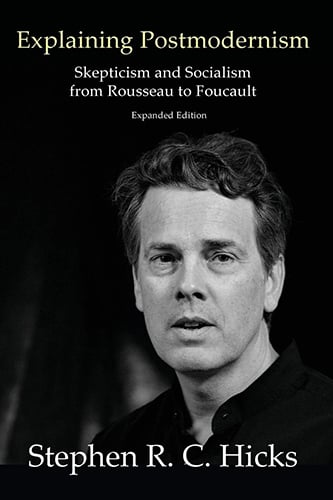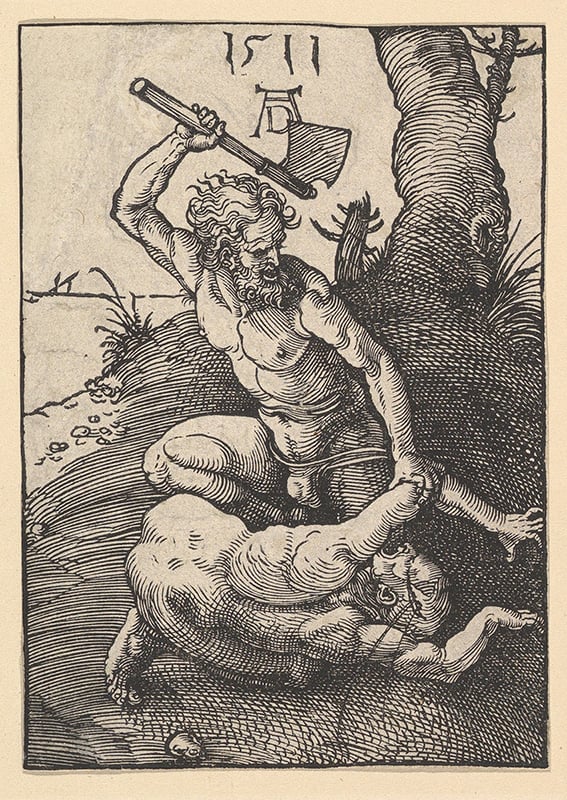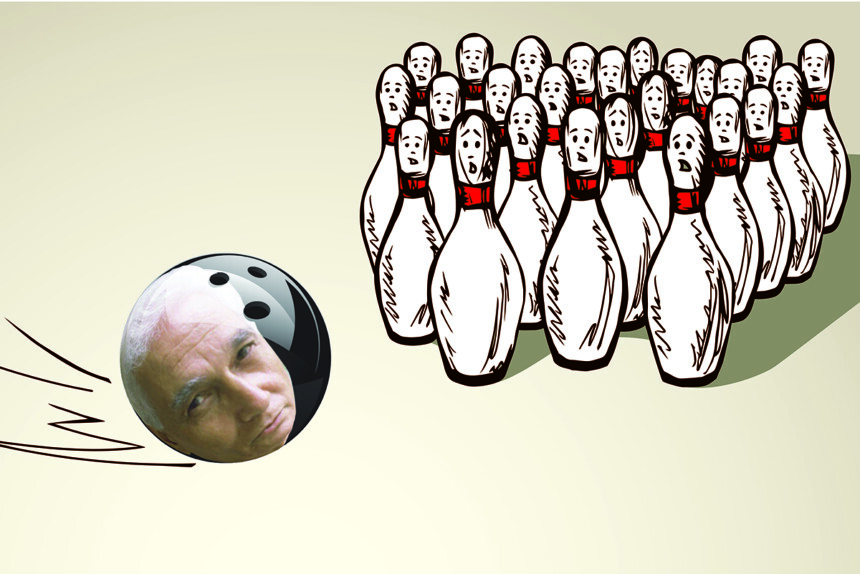Politics are over in America. Political maneuvering will go on, of course, but the old civics class view of American political life was based on a set of assumptions that are no longer operative.
First, America was far more homogenous before the 1965 Immigration Act and the “New Left” political and social revolution of the ’60s changed the country demographically and culturally. Even then, the old America of regional cultures was about as diverse as a polity could be and still remain stable.
America, with her Anglo-Saxon political heritage, was a country bound together by a considerable reserve of social capital and public trust. It was understood that a loss at election time did not mean an existential crisis (the election of 1860 notwithstanding). Politics were not zero-sum. That is no longer true. And that means that the old politics, which had been hollowed out over a period of decades, are largely a thing of the past.
Second, American politics are no longer merely about policy. Policies can be bargained over within a procedural framework that once included shared cultural assumptions. But policy wonks cannot resolve internal disputes about the most fundamental moral and social issues, including the legitimacy of the American polity as such, the value of human life, even the definitions of “gender,” “sex,” and “marriage.” These are not issues that can conceivably be worked out in committee like the tax code or health care.
Third, American civic engagement is disappearing as trust evaporates. In most cases we no longer know our neighbors, and, in many cases, we don’t want to. It’s hard to find common ground with strangers in exotic garb speaking unintelligible tongues, or the person next door who may look the same but who holds a radically opposing set of values and assumptions.
We are all “bowling alone” now, to borrow the title and concept from Robert Putnam’s book published in 2000. America’s obsession with excessive diversity has destroyed its already weakened sense of community.
I can’t remember when safety caps and armor-like layers of packaging on supermarket items became common. It was probably about the time that parents became reluctant to let their children wander their neighborhoods unsupervised or stopped allowing them to trick-or-treat by themselves on Halloween. We had discovered that there were real monsters out there. I don’t think it was mere coincidence that “school shooting” became an all-too-familiar part of the vernacular along the way, or that serial killers became something like cultural icons.
Something eerie, something terribly frightening, has taken place in America. The fragmentation and atomization of mass society has undermined the foundations of a stable social order. Psychological and spiritual confusion became all too common. The Internet and other technologies only increased personal isolation. The lonely crowd created its own alternative media-driven worlds, and their artificial environments gave a whiff of transcendence from a decaying society, like a longed-for narcotic, a product of the illusion of digital omnipotence.
Alienation has become a common theme in literature, and “art” is no longer the realm of the sublime, the inspiring, and the beautiful, but a celebration of subversive ugliness. Subverting traditional values, norms, and morality were baked into the cake of popular culture. Recognition as an “artist” now largely means affirming one’s ability to deconstruct the aesthetic parameters that had once affirmed our personal roles, lent society some coherence, and along with Christianity, presented at least a glimmer of hope and purpose in this world.

The spirit of our age is postmodern. In his book Explaining Postmodernism (2004), philosopher Stephen Hicks presents an intellectual framework that at least gives us a sense of where we have been and where we are now. Premodernism, as sketched by Hicks, was based on a foundation of transcendence and revelation of ultimate Truth. Human nature was “fallen” in the premodern world of Christendom, and salvation was attained through faith. That world was “collectivist” (I would say “communitarian”). Modernism was materialist and naturalistic, with reason and the scientific method, not revelation, as the path to Truth. Modernism was individualist and assumed human autonomy. Man would be his own savior.

above: book cover for Explaining Postmodernism by Stephen Hicks (Connor Court Publishing)
Modernism has yielded to postmodernism. Postmodernism assumes subjectivity, that truth and reality itself are unknowable. Postmodernists claim that society has been “constructed,” and is not based on any coherent or defensible basis. That leads them to the belief that all constructed social relations in our society are built on force in the service of power, rather than legitimate authority. This is the fundamental postmodern assumption that poisons our culture from top to bottom. It is no wonder that despair and nihilism followed. The road to societal hell was paved by a rejection of reality itself.
Existential nihilism and rage against Being are at the root of postmodernism. Hicks explains that the rage that characterizes the postmodernist milieu is the result of a deep-seated frustration among ’60s radicals who observed that Marxist socialism was failing. The technocratic rationalism of “scientific Marxism” was being defeated by capitalism.
The historical facts did not fit the left’s predictions of development toward revolution and socialist utopia. Since the facts didn’t fit the theory, the left was forced to adjust the theory so it could ignore the facts. It abandoned Marx’s class-based critique of capitalism for one rooted in the revolt of a mass of fractured identity groups—a cultural revolt declaring that there are no facts, just constructed narratives.
This post-Marxist deconstruction project went into high gear, attacking language for ideological ends (replacing “sex” with “gender,” for instance), deconstructing historical narratives, and assigning victim and oppressor status. The birth pangs of what would eventually be called “woke” politics were accompanied by a frontal assault on Western civilization and “whiteness” in particular. According to woke theorists, the only possible explanation for the failure of exalted minority groups (for victim status is a sacred condition), despite any evidence to the contrary, must be an insidious, and invisible institutional or structural racism or sexism supposedly embedded in Western civilization.
Gentle reader, you may not be interested in the postmodern theorists Michel Foucault or Jacques Derrida, but woke politics is very much interested in you.
It’s worth observing that the hard left has never been monolithic. The international communist movement of the past was marked by sharp internal divisions between modernist/technocratic Marxism and anarchist romanticism. There was a tension between the desire for material abundance, viewed by the modernist school as achievable only by industrialization, centralization, and bureaucratization, and a utopian vision of society unencumbered by hierarchy and distinctions between individuals. In the latter utopian vision, the “vanguard party” was supposed to lead the way to perfect equality and the bohemian intellectual ideal of self-realization. For the romantic revolutionaries, the revolution above all required a supreme act of will.
The romantic view, together with the conspiratorial origins of the party in Russia (a model followed across the globe), fueled the Marxists’ obsession to hunt for “enemies of the people,” who need to be “re-educated.” The results of these obsessions became evident under Stalin’s rule, Mao’s Cultural Revolution, and Pol Pot’s Cambodian killing fields. Transforming society and human nature required mass terror and social upheaval, whether the goal was modernization or communist anarchy.

If postmodernism described by Hicks portrays a worldview that has become more than a little familiar in 2022, that’s not surprising. The divisions of the past are present today in the alliance of managerial Davos globalists with the likes of Antifa and Black Lives Matter. Whether one calls it “post-Marxism,” “Cultural Marxism,” or “woke” radicalism, the anti-rational, visceral anger that typifies the hard left is far more profound, and runs far deeper, than political and social theorizing. There is something more fundamental going on: existential rage.
Existential rage is as old as Cain killing Abel. Behind it is resentment transformed into something far more sinister, something Nietzsche called “ressentiment.” He defined the word as a poisonous bitterness driven to hatred, fueled by a burning sense of envy and anger with one’s condition. And, I would add, a rage against God. Ressentiment is not so much concerned with acquiring what others have as it is about making sure those others do not have it. As Hicks put it, “Like Iago, postmodernism does not have to get the girl in the end. Destroying Othello is enough.”

above: Cain Killing Abel, woodcut print by Albrecht Dürer, 1511 (Metropolitan Museum of Art)
The emotive primal scream of the hard left comes from such a place, and it recurs again and again as it is part of the human condition. It is one reaction to the trials of existence, and the hard left encourages it to escape its cage in the collective psyche and become an instrument of the destruction of a society it hates and resents. The hard left is the home of patricide and fratricide, of attacks on authority, of rejection of social norms that repress often self-destructive compulsions. Containing our impulses is the price of civilization. Human life is tragic, and culture can be—and sometimes must be—a hard teacher.
Which explains our dilemma. The traditionalist right offers some sense of purpose and fulfillment in doing one’s duty even while accepting a tragic view of life. There should be no promise of “success” or “happiness” from a serious right. It’s the left that envisions an earthly utopia to reward political struggle and to provide an outlet for existential rage. But it is the promise of the serpent: that each of us aim to become our own gods.
It is no accident, as Stalin might have said, that seething anti-humanism has found a home in postmodern radicalism. Nihilism is embedded in postmodern ideologies. Consider, for example, the radical environmentalist’s disdain for a destructive humanity that has polluted the planet. In his view, the world would be better off without us. Then there are the evil twins of abortion and euthanasia. In the 1960s, Susan Sontag called the white race a “cancer” on the planet. It appears that the postmodern left not only hates the white race, but Being itself. Their self-affirmation is achieved by acts of destruction: I destroy, therefore I am.

The worldview that permeates the dominant anti-culture is now that of the shooters at Columbine High School. Dylan Klebold and Eric Harris were the products of the fractured and crippled society that resulted from decades of anti-life, anti-Christian, and anti-humanity rage against the world. On April 20, 1999 in Columbine, Colorado, the two twisted boys acted out their frustrations and avenged their perceived failures by killing 13 people and wounding 24 others before following the Father of Lies to self-destruction.
In his journal, Klebold wrote that God was “f—— me over big time and it p—– me off.” “I HATE my life,” he wrote. “I want to die.” He lamented his lack of success with girls and his shyness, and called his peers “morons.” Dylan Klebold declared, “I am GOD” compared to those “brainless zombies.” He fantasized about killing certain people and screeched that life was “NOT FAIR!!!” “Death,” he wrote, “is a reprieve,” while “life is a punishment.”
Klebold and Harris found no solace in the suffering God who, through the Incarnation, shared all the pain and doubt humans experience, even to the point of wondering whether His suffering had any purpose (“My God, my God why have you forsaken me?”). In that suffering, our God was with us, and is with us. That is our hope.
We have come full circle. If there is no Ultimate Truth that reality is grounded in, then there is no possibility for dialogue or compromise. If there are no facts, only the will to power is left in the death struggle between opposing “narratives.” Politics as we have previously understood them are no longer possible. We are all bowling alone in Columbine. We have the cross and the hope that God is with us. We must live in that hope and defend what is true and right whenever we can.
above: postmodern French philosopher Jacques Derrida goes bowling (Adobe Stock)
